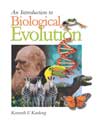 |
1 |  | 
Some eubacteria, as well as some plants, are able to convert atmospheric nitrogen to ammonia, eventually producing nitrate. |
 |
 |  | A) | TRUE |
 |  | B) | FALSE |
 |
2 |  | 
Photoautotrophs first appeared on Earth about 3.5 billion years ago. |
 |
 |  | A) | TRUE |
 |  | B) | FALSE |
 |
3 |  | 
All bacteria cause disease or are otherwise harmful to humans. |
 |
 |  | A) | TRUE |
 |  | B) | FALSE |
 |
4 |  | 
Archaebcteria can live only in environments without oxygen. |
 |
 |  | A) | TRUE |
 |  | B) | FALSE |
 |
5 |  | 
Which of the following is NOT a problem of terrestrial life for plants? |
 |
 |  | A) | Atmospheric filtration of sunlight reduces the energy available for photosynthesis. |
 |  | B) | Air provides no buoyancy; plants, if they are to grow tall, must build structures to resist the force of gravity. |
 |  | C) | Life on land increases the risk of dehydration. |
 |  | D) | More than one of the above. |
 |
6 |  | 
Why do trees have growth rings? |
 |
 |  | A) | Trees are annual plants, and each ring corresponds to one year of growth. |
 |  | B) | Trees add new material only at the shoot tips. |
 |  | C) | Each year, the vascular cambium adds new material laterally during the growing season and goes dormant during the non-growing season. |
 |  | D) | Bundles of vascular tissue conduct water and minerals only during the summer in seasonal environments. |
 |
7 |  | 
What is meant by "alternation of generations" in plants? |
 |
 |  | A) | The life cycle alternates between sporophyte and gametophyte stages. |
 |  | B) | The plants reproduce every two years rather than once a year. |
 |  | C) | The life cycle alternates between DNA-based and RNA-based stages. |
 |  | D) | More than one of the above. |
 |
8 |  | 
All plants, by definition, have vascular tissue, roots, and seeds. |
 |
 |  | A) | TRUE |
 |  | B) | FALSE |
 |
9 |  | 
Which of the following structures is unique to angiosperms? |
 |
 |  | A) | seed |
 |  | B) | pollen |
 |  | C) | ovule |
 |  | D) | flower |
 |
10 |  | 
Fungi are plants that lack photosynthesis and are the primary decomposers in forest ecosystems. |
 |
 |  | A) | TRUE |
 |  | B) | FALSE |
 |
11 |  | 
All animals are characterized by |
 |
 |  | A) | bilateral symmetry. |
 |  | B) | sexual reproduction. |
 |  | C) | heterotrophy. |
 |  | D) | a chitnous exoskeleton. |
 |
12 |  | 
Which of the following animal groups contains the largest number of species? |
 |
 |  | A) | mollusks |
 |  | B) | arthropods |
 |  | C) | bony fishes |
 |  | D) | annelids |
 |
13 |  | 
All vertebrates have |
 |
 |  | A) | jaws. |
 |  | B) | bony endoskeletons. |
 |  | C) | an amniotic egg. |
 |  | D) | None of the above. |
 |
14 |  | 
An organism's realized niche is the portion of its fundamental niche that it actually utilizes. |
 |
 |  | A) | TRUE |
 |  | B) | FALSE |
 |
15 |  | 
Which of the following scenarios is NOT an example of interspecific competition? |
 |
 |  | A) | Two male moose fight over access to females. |
 |  | B) | Barnacles of the species Chthamalus occupy only the upper intertidal region in the presence of the species Semibalanus. |
 |  | C) | Five species of wood warblers coexist by exploiting different niches in their spruce-forest habitat. |
 |  | D) | More than one of the above. |



 McGraw-Hill Higher Education
McGraw-Hill Higher Education